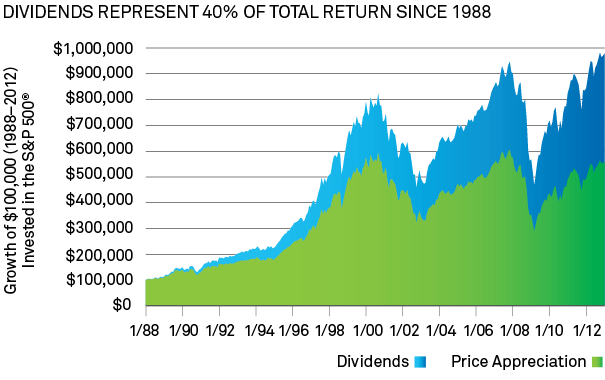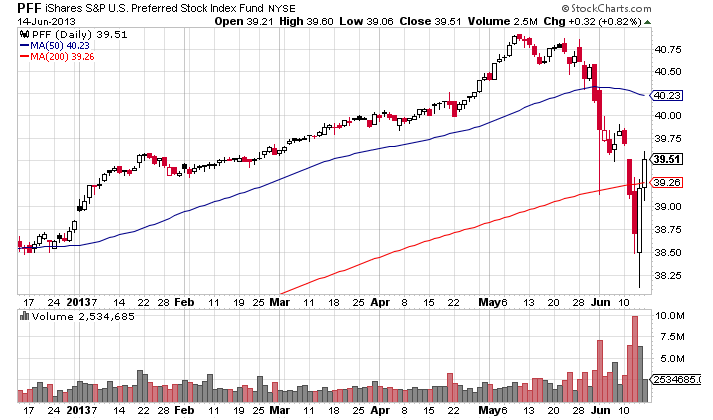3 ETFs Offering Access to HighYield Preferred Stocks
Post on: 29 Июнь, 2015 No Comment

Think preferred stock yielding 6% or more is out of reach? Think again!
Hedgie du jour David Einhorn has taken a break from fighting about Herbalife (NYSE:HLF ) with Carl Icahn to make fun of Apple (NASDAQ:AAPL ) for hoarding an enormous cash stockpile with no practical use for it in sight.
The scheme? Start offering preferred Apple stock with a better dividend yield.
As an Apple shareholder, I am intrigued by the debate, but very skeptical. Einhorn is certainly angling at something, considering his firm’s massive $600 million position in AAPL stock and I have a feeling he wants a sweetheart deal that the unwashed masses like me won’t be privy to. As long as I can share in whatever payday he’s pushing for, I suppose I don’t have a beef with Apple preferreds … but that’s a big question that remains unanswered.
Anyhow, there has been and will continue to be a host of articles written about Einhorn, Apple and related shenanigans. But what I’d like to focus on today is the nature of high-yield preferred stock and the fact that even small-time investors can get in on the act via mutual funds and ETFs.
What Is Preferred Stock and How Is It Different
Preferred stock structures differ from company to company, but as the name implies, it has certain superior qualities over common stock. Preferred stock typically takes priority over common stock when it comes to getting paid dividends and in case of bankruptcy, preferred shareholders get preferential treatment too.
Oftentimes, preferred stock also is “callable” by the issuing company, meaning they can buy it back at a set price in the future, and/or “convertible,” meaning it can be converted to common stock for a certain price.
It’s typical for preferred stock to lack voting rights. Also, it’s worth noting that preferred stock does not move 1-to-1 with common stock in appreciation and often lags considerably even when NYSE- or Nasdaq-listed shares soar. Preferred stock usually is best used for a sleepy, dividend-focused portfolio engineered for the long-term.
So why mess with preferreds? Well, because while the shares might not be as liquid as common stock, they often have big-time long-term benefits.
Consider Warren Buffett’s big investment in Bank of America (NYSE:BAC ) preferred stock during 2011. The deal was plush a 6% dividend when common stock was paying a mere penny per share, and an option for Bank of America to buy back the investment at any time for a 5% premium above current pricing. Pretty darn good terms! Of course, that deal was exclusive to Mr. Buffett because of he rode in like a white knight when many investors wouldn’t.
Also, even in less dramatic cases, preferred stock tends to be difficult and confusing to buy for Joe Investor. Information isnt as readily available, and sometimes one company can offer different flavors of preferred stock with different terms. Even some stockbrokers have difficulty getting the facts on preferreds, so your broker might not have all the answers.
3 Simple Ways to Buy Preferred Stock
But take heart! Because while you might be intimidated by the complex nature of preferreds, there are a host of quality preferred stock funds out there. These not only give you access, but built-in diversification.

The biggie is the iShares S&P US Preferred Stock Index Fund (NYSE:PFF ). Holdings include preferred stock in General Motors (NYSE:GM ) as well as its GMAC finance arm, and bank stocks HSBC (NYSE:HBC ) and Wells Fargo (NYSE:WFC ), to name a few. The breakdown of the fund includes roughly two-thirds financial investments, with a smattering of other preferred stock in utilities, autos, telecom and other sectors. The PFF fund has a whopping $11 billion assets right now, a reasonable expense ratio of 0.48% and 12-month yield north of 6%. Of course, from a share perspective it has only put up 4% gains in the past 12 months, so even with the big dividends, common shares in these stocks might have served you better in 2012.
Another good-sized fund is the PowerShares Preferred Portfolio (NYSE:PGX ) with $2 billion in assets, a 12-month yield at almost 6.4% and a modest expense ratio of 0.5%. This fund is heavily weighted in financials, however, with roughly 90% of its holdings in the bank sector via preferred investments in Citigroup (NYSE:C ), JPMorgan Chase (NYSE:JPM ), ING Groep (NYSE:ING ) and others. Like PFF, PowerShares fund put up a little less than 4%, but that’s not counting the dividends which are the biggest reason for investing in preferreds.
If you want to chase yield even more, consider the Global X SuperIncome Preferred ETF (NYSE:SPFF ) with a 30-day yield north of 7% and a modest expense of 0.58% annually. Assets are just 12 million, but you get monthly distributions from this ETF, which has top positions in Credit Suisse (NYSE:CS ) preferred for a 7.99% payout and American International Group (NYSE:AIG ) with its 7.79% yield on preferred stock. On a share-price basis, however, take note that SPFF is flat in the past 12 months.
There are a host of other funds out there in different flavors, too. If you want to avoid overweight investments in financials, an option is the Market Vectors Preferred Securities ex Financials ETF (NYSE:PFXF ). Then theres the iShares S&P International Preferred Stock Index ETF (NYSE:IPFF ), with less than 1% exposure to the U.S.
Just remember that you’re chasing yield here, not share appreciation. And that comes with risks just like junk bonds and other income investments. So do your research and don’t just get sucked in by the headline dividends from these preferred funds.
But invested in wisely for the long term, there’s no doubt the power of preferred is worth looking into and these ETFs offer easy access to retail investors.
Related Reading
Jeff Reeves is the editor of InvestorPlace.com and the author of “The Frugal Investor’s Guide to Finding Great Stocks.” Write him at editor@investorplace.com or follow him on Twitter via @JeffReevesIP . As of this writing he held a long position in Apple but no other stocks named here.














